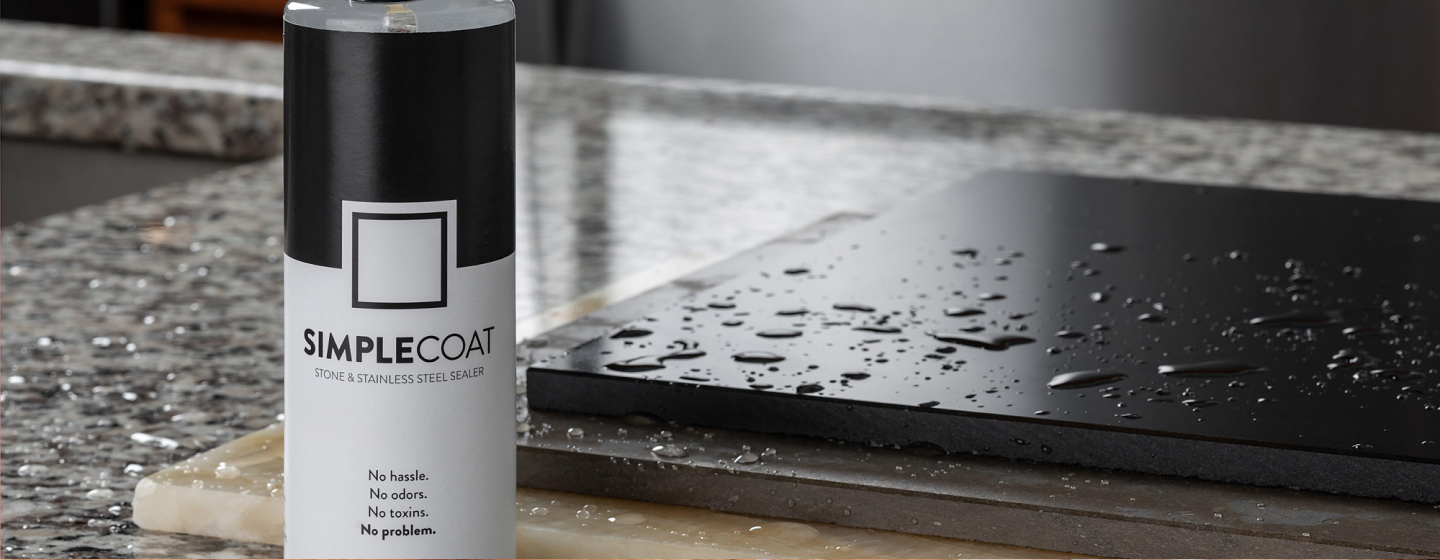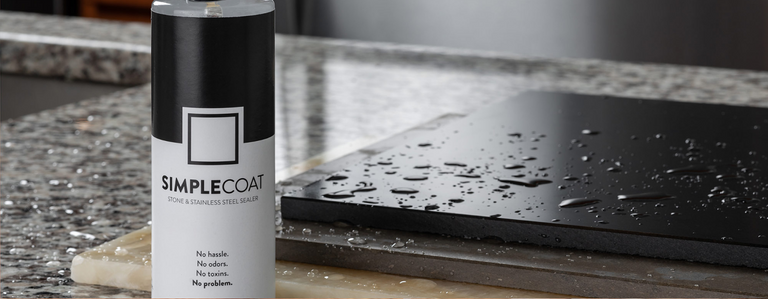INTRODUCTION
Natural stones like granite, marble, and travertine come in a wide range of finishes. These finishes play a crucial role in determining the stone's final appearance, its suitability for your intended use, and the maintenance it requires. With numerous possible combinations of stones and finishes, choosing the perfect one may seem overwhelming, but rest assured, the process is often more straightforward than it appears.
Before beginning your selection journey, this guide can help you become familiar with finish terminology, visual characteristics, and their performance attributes.
FINISH TYPES
Let’s start by exploiting the stone finishes most commonly used in the home and commercial environments. Note that not all finishes are applicable to all stones, and there are often multiple options within a general finish type, especially considering the degree of surface roughness created by the specific finishing process. Multiple finishing treatments may also be used on the same stone.
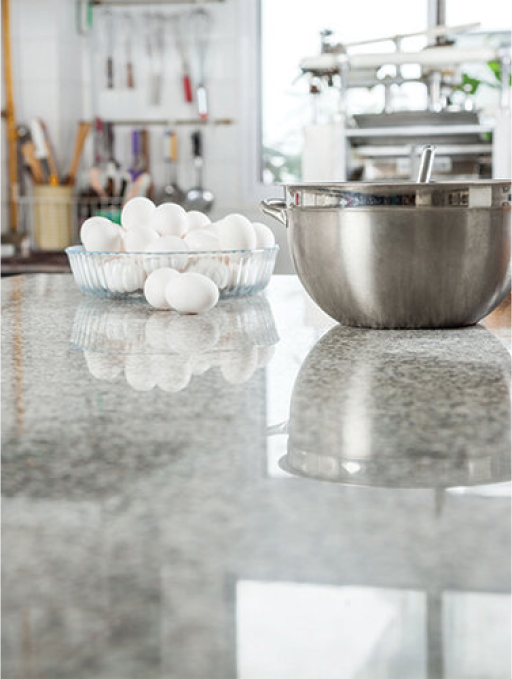
Polished
Polished finishes are one of the most common finishes out there. They are often applied to solid countertop surfaces and provide a shiny, glossy appearance while enhancing the color. The ability to achieve a mirror-like finish will depend on the qualities of the specific stone that you choose, but polished finishes are a good choice for kitchen and bath countertops because they are easy to clean and generally remain less prone to staining.
Polished finishes are best suited for stones like Quartzite, granite, some travertines, and onyx.
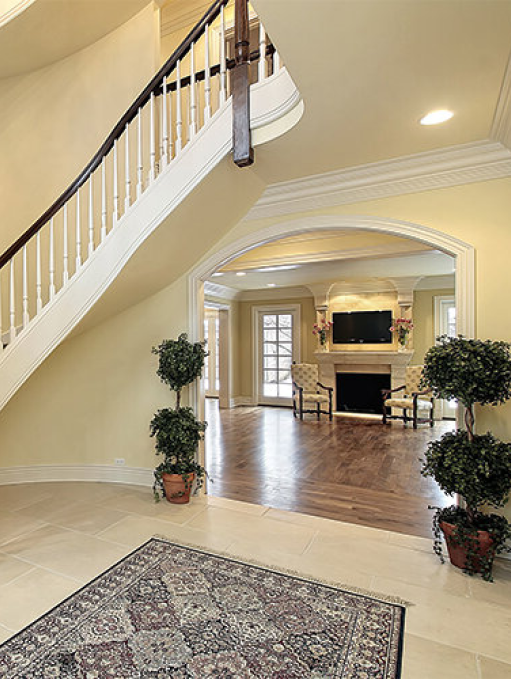
Honed
A honed finish produces a flat surface with a matte finish, similar in appearance to very fine grit sandpaper. This type of finish tends to dull colors and patterning, and can be very effective for those looking to “soften” the appearance of the stone. Honed finishes are especially attractive on flooring where polished finishes tend to show scratches or marks from foot traffic. Honed finishes can also dramatically improve the non-slip characteristics of a stone compared to a polished finish.
Honed finishes can be used on almost any stone.
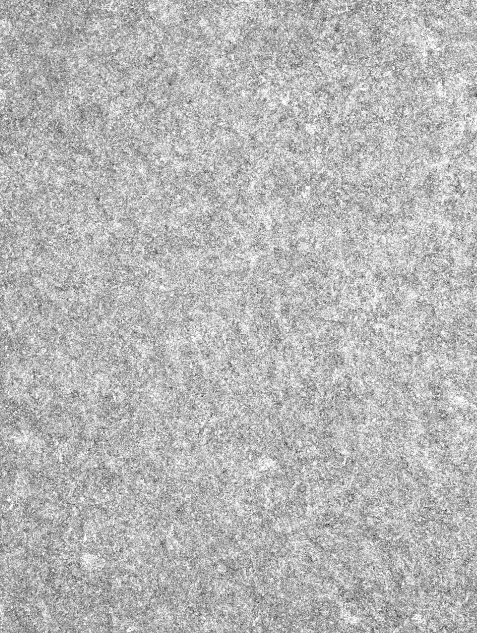
Sandblasted
As the name implies, a sandblasted finish is typically created using a sandblasting technique with high pressured air and various forms of abrasives. By varying the abrasives used, and the exact technique, sandblasting can be used to create a variety of matte stone surface textures. Sandblasting generally creates a rougher surface than the honing process, and may be used for more dramatic texturing such as creating ridges or pits.
Sandblasted finishes can be applied to a wide range of stones depending on the exact nature of the particular stone and the final finish desired.
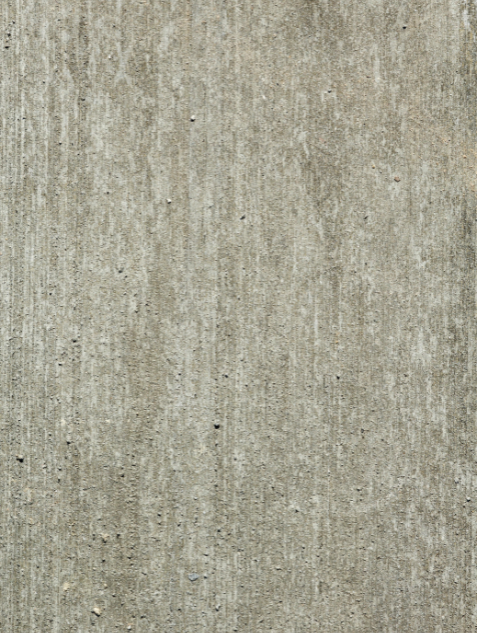
Brushed
A brushed finish is created using tools such as wire wheels and brushes to form a worn casual appearance. It can be used on its own or in combination with other finishes like flame finishing to create a truly unique look.
Brushed finishes can be applied to just about any stone.

Bush Hammered
Bush hammering creates a very rough surface. Using a hammer, the surface is broken up to create an uneven structure. Much like flame finishing, it creates a non-slip, natural looking weathered texture.
Bush Hammered finishes can be applied to almost any stone and can even be applied to walls.
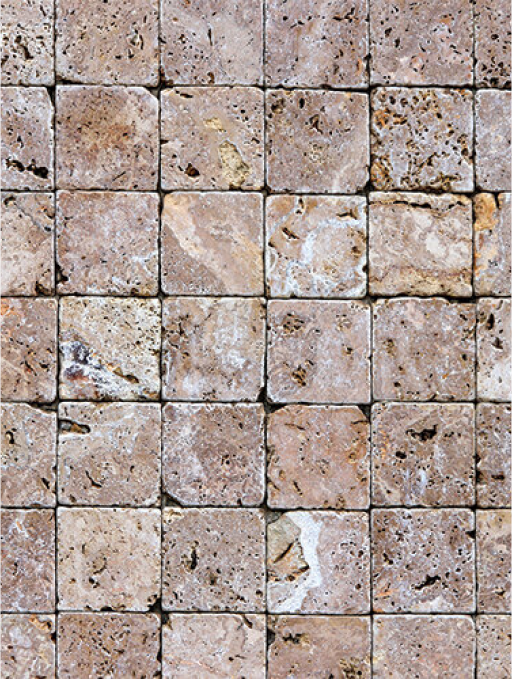
Tumbled
A tumbled finish refers to the treatment process where stone tiles are tumbled with an abrasive to create a matte finish and remove sharp edges. They tend to enhance the pits and holes present on the original stone, producing a non-slip surface.
Tumbled finishes are a popular choice for bathrooms, especially walk-in showers and tub surrounds and can be used on just about any type of stone.
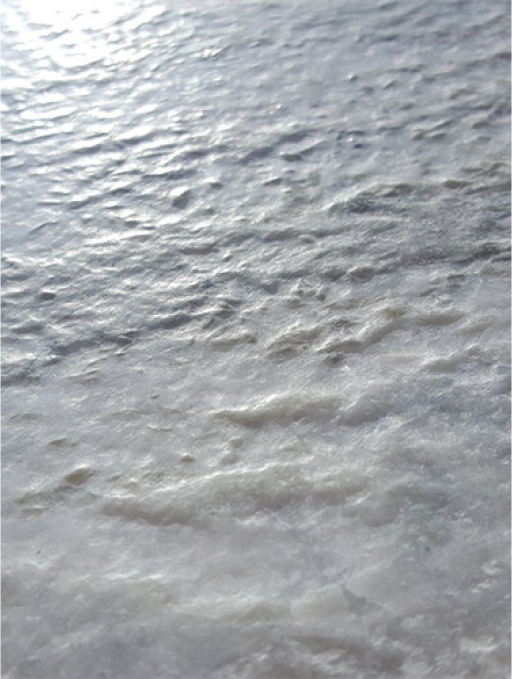
Leathered/Antiqued
Through various mechanical grinding processes, very unique finishes falling into the leathered or antique category can be achieved on many stones. The process results in a matte finish similar to honing, but with much more surface variation. A three-dimensional appearance is created versus the flat finish common to honing, but the exact process used, as well as the characteristics of the stone itself, dictate the amount of surface variation that is present. Leathered or antique stones often have a “rustic” appearance, but can also be used to create a sleek modern design as well.
Leathered or Antique finishes are most commonly found on quartzite, granite, and marble.
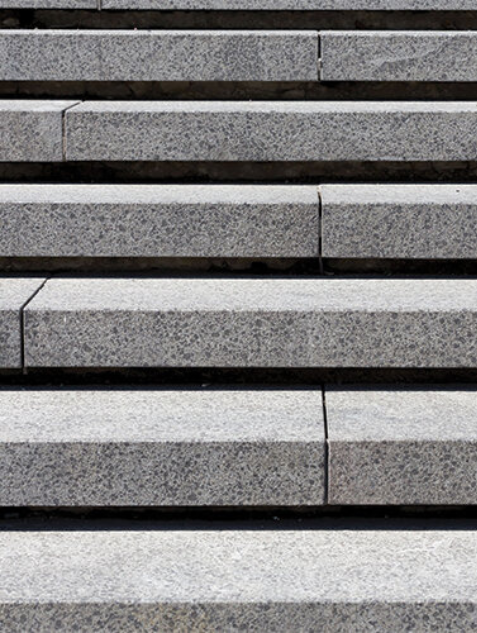
Flamed/Thermal
A Flamed or Thermal finish is created by using heat treatment to create a rough surface, often using a torch on wetted stone. Because of its rough texture, this finish is often used in outdoor applications where a non-slip surface is a priority, and where a natural look is most appropriate. It’s very commonly used for stairs or other areas that are often wet, and typically isn’t appropriate for countertops or indoor floors.
Flamed finishes are most commonly applied to granite due to its thermal expansion properties.
CHOOSING A STONE FINISH FOR YOUR APPLICATION
The above descriptions should give you an idea of how various finishes look and perform, however, selection of a finish goes hand-in-hand with the selection of the stone itself, and where that stone will be used. Below are some things to consider when selecting a finish.
Stone Type
Not all finishes are available on all stones. This is especially true of high polish finishes which are most common with Quartzite, Granite, and Marble. Conversely, some finishes, such as honed, are available on almost all stones.
Keep in mind that finishes may look different depending on the type of stone. For example, a brushed finish on Limestone will look completely different than a brushed finish on Quartzite. As a result, the selection of stone type and finish may be iterative, but is completely normal.
Stone Color
The stone color and presence of veins and flecks will greatly affect the general appearance of different finishes, as well as impact their performance. For example, dark stones look different with a leathered finish than do light stones. Similarly, a polished finish on black granite is notorious for showing fingerprints, while a polished finish on very light colored granite is not nearly as problematic. When looking at samples of different finishes, try to find samples that are similar in stone type (granite, marble, etc.) and color to the stone that you are choosing. This will give you the most representative impression of how your final product will look.
Application
Where the stone will actually be used affects both the aesthetics and performance characteristics of various stone/finish pairings. For example, with stones that will be used for flooring, the non-slip characteristics of the finish, as well as the tendency to show scratches, will be very important factors. For countertops, the resistance to staining, tendency of the finish to show fingerprints, and ease of cleaning will be important. These considerations are a function of the specific type of stone and color. For example, a honed finish with a dark granite will look quite different than a honed finish with a light granite. These two finishes might compare quite differently if the stones are to be used on a countertop, rather than a wall. This reiterates the recommendation above that you find samples of stone/finish combinations as close to your final product as possible (including color), and view these in light of where the stone will be used, i.e. countertop vs. flooring, etc.
SUMMARY
Remember that there is no one choice of stone and finish that is perfect for everyone. Your choice may even evolve iteratively, starting with a stone, exploring its finishes, and possibly revisiting stone selection to find the best fit for both your aesthetic and performance preferences. For this reason, we always recommend working with your supplier and considering their recommended stones and finishes before making your final decision.
TAG SIMPLECOAT®
Join our online community



